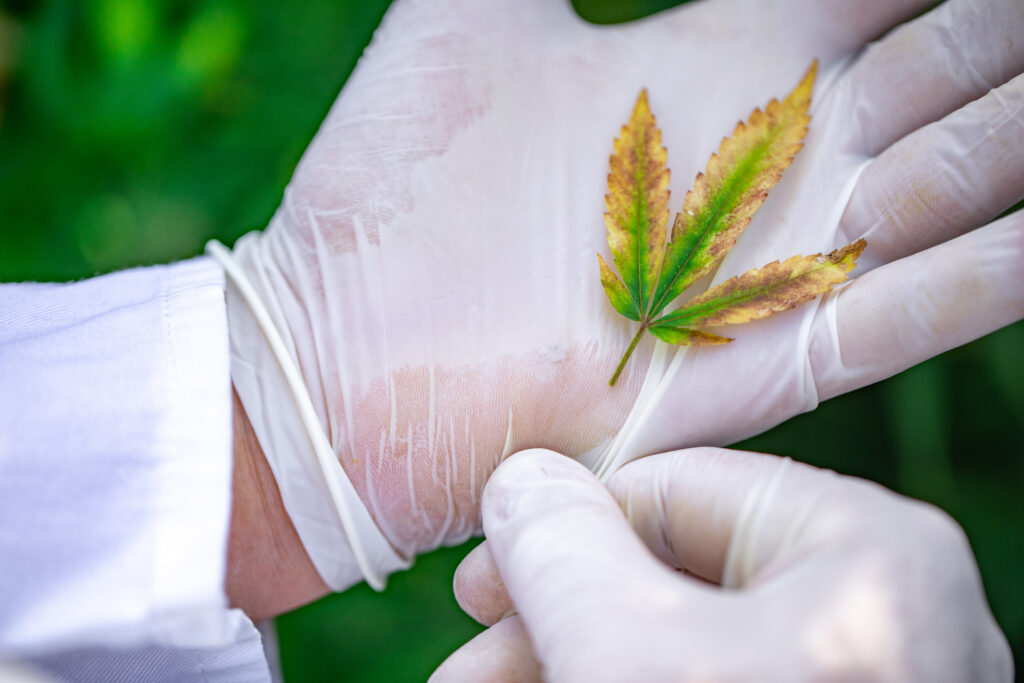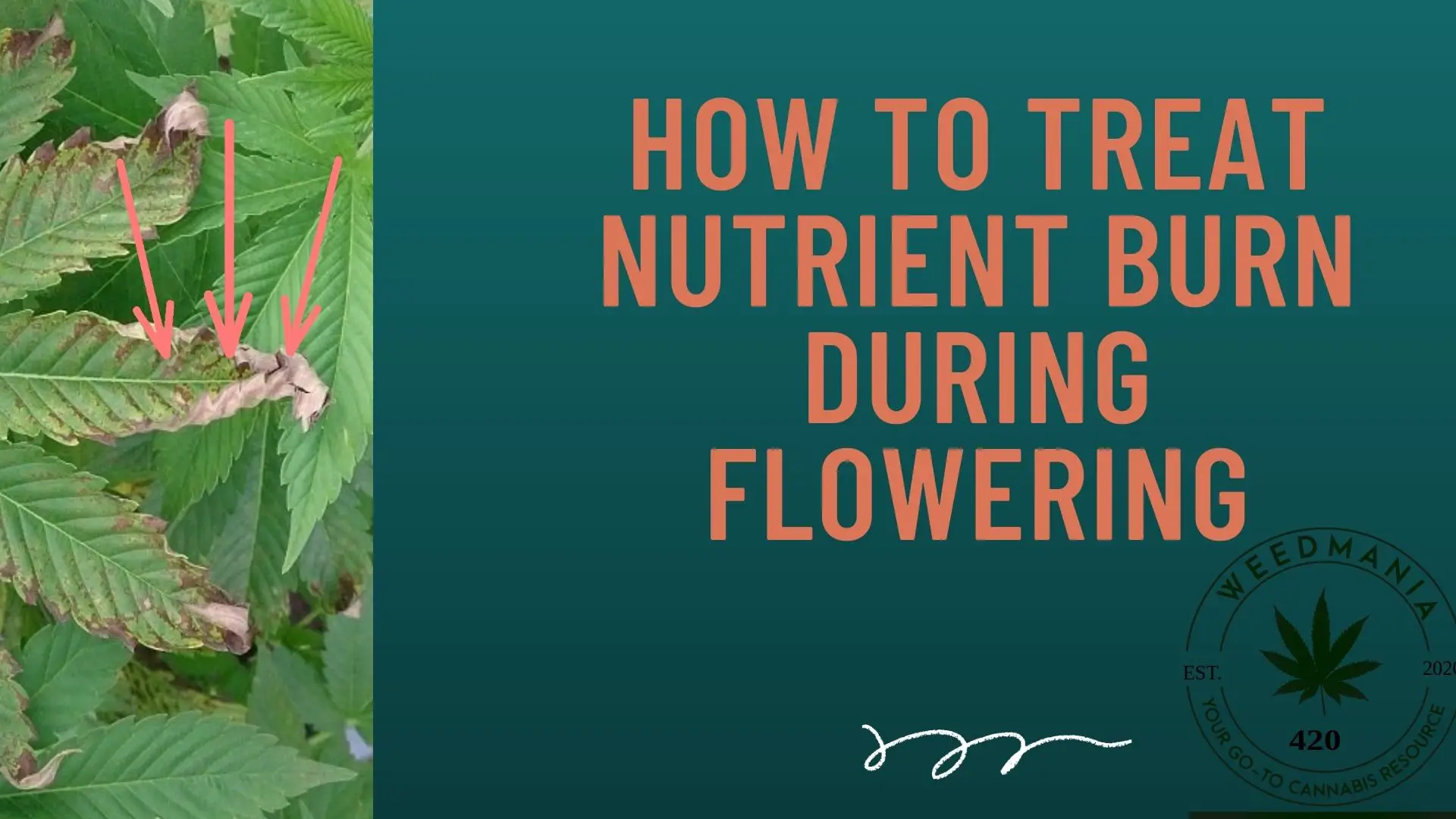Nutrient burn is one of the common problems that cannabis growers grapple with. The plants need as many nutrients as they should get, but sometimes, we go a little overboard, giving them more than they can take.
Cannabis plants thrive on three significant macronutrients— nitrogen, potassium, and phosphorous. But still need a lot of other micronutrients like manganese, calcium, and iron, among others.
The difference between a good grower and an experimental wannabe grower is feeding the plants with a balance. It’s essential to give the proper nutrients in the right proportions to avoid nutrient burn.
While nutrient burn isn’t good for the plant at any stage, flowering cannabis is especially vulnerable. The plant needs many resources to make the buds and lacks the time and energy to grow new leaves after a nutrient burn.
How To Treat Nutrient Burn During Flowering
First, stop adding more nutrients. When you stop feeding the plants, they’re forced to use whatever is in the ground. If it’s early flowering, you should flush with pH-balanced water, then cut the nutrients to ½ the recommended dosage after they’ve healed. Nutrient burn at the flowering stage will result in low yields and poor-quality buds.
If it’s too late into flowering, you should just cut the feeds and wait for the flush before harvest.
Why Nutrient Burn at Flowering Needs Special Attention
If you’ve been growing a while, you know how plants grow hungry for nutrients during flowering.
They need all the energy they can get to hasten the bud-making process, and thus, flushing can wash off more nutrients from the medium— a loss that might stagnate bud formation and ultimately affect your yields massively.
Another problem with nutrient burn is that it affects the leaves, and plants depend on the leaves for photosynthesis.
When big patches of the leaves are burnt, they can’t collect the solar energy needed for photosynthesis, and thus, the plants will grow hungry even when there’s a lot of nutrients in the soil.
Photosynthesis slows down during nutrient burn, it doesn’t matter what stage they’re in, but during flowering, the plant doesn’t have the time to grow new leaves to replace the burnt ones.
Thus, your plants won’t have enough ‘solar panels’ to facilitate proper plant nutrition.
RELATED READ: Can I Use Neem Oil During Flowering?
Note: Since nutrient burn becomes harder to deal with in the flowering phase, pay close attention to your plants in the vegging phase because the plants can regrow new leaves after nute burn. In flowering, the leaves stop growing, denying the buds their ability to grow to their full potential.

Tips To Prevent Nutrient Burn During Flowering
There is nothing beautiful about nute burnt leaves. The burnt, brown patches steal away from the wholesomeness of the leaves and hinder photosynthetic processes.
However, you have the advantage of preventing the occurrence of nutrient burn. And with everything, prevention is always better than cure.
Fact is, any time your plants suffer nute burn during flowering, you’re going to lose yields. And yes, you’re are also going to harvest buds that are harsh and smell different.
RELATED READ: Can You Use Too Much Bat Guano?
These tips will help you avoid nutrient burn;
1.Use Less Than The Recommended Dosage
Most manufacturers will give the highest possible dosage on the product label. Thus, giving less than the recommended dose leaves room for the plants to thrive without risking nute burn.
Feed the plants ¾ of the recommended dosage. This is even helpful because plant’s nutrients needs are different, even when they’re the same strain.
2. Test The Soil Before You Add Nutrients
Sometimes your plant suffers nutrient burn because the grow medium already had nutrients in it before you supplemented.
Investing in a TDS Meter can save your plants from nutrient burn as it shows you the levels of various nutrients in the soil. This will help you avoid nutrient burn by only adding nutrients when appropriate.
3. Use Appropriate Fertilizer Ratios
At flowering, the plants will need more phosphorous than nitrogen. Still, because the vegging stage had you supplementing more nitrogen, you can easily overdose on nitrogen if you use the wrong nutrient ratios.
Fortunately, this is a problem you can easily avoid by using appropriate fertilizers for every stage. It’s already done for you; you just need to know your plant’s unique needs.
Test your soils before you transit to the flowering stage and only give the needed nutrients.
RELATED READ: Can Too Much Molasses Kill Your Cannabis Plant?
4. Stop Overusing Growth Stimulants
Growth stimulants help small plants to pick up growth much faster and survive the vulnerable seedling stage. However, growth stimulants are rich in nitrogen, and when overused, can result in excessive nitrogen uptake.
5. Water Your Plants Regularly
Poor watering practices can cause nutrient burn. When the soil is left too dry for too long, plants are exposed to higher concentrations of nutrients at the root zone.
Instead of the nutrients dissolving in water, they form lumps on the plant’s roots, raising the Total Dissolved Solids (TDS) in the grow medium, causing nutrient burn.
I can’t emphasize this enough, dealing with nutrient burn is easier in veg than flowering. Thus, monitor the plants before they transit to the flowering stage that comes with more vulnerabilities.
In conclusion, it turns out there is no unique remedy to save your plants from nutrient burn during flowering. It all depends on how far the plant has been into flowering. You can flush with pH-balanced water, but once hit at flowering. You will lose yield.
Take care of your plants, monitor them while still in veg, and remedy nutrient issues before flowering. That’s the only way to survive nutrient burn without losing yields— tackling it earlier.

